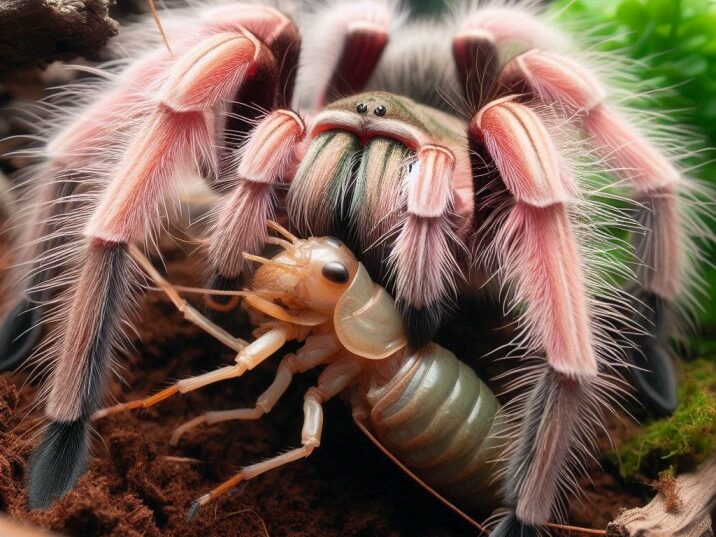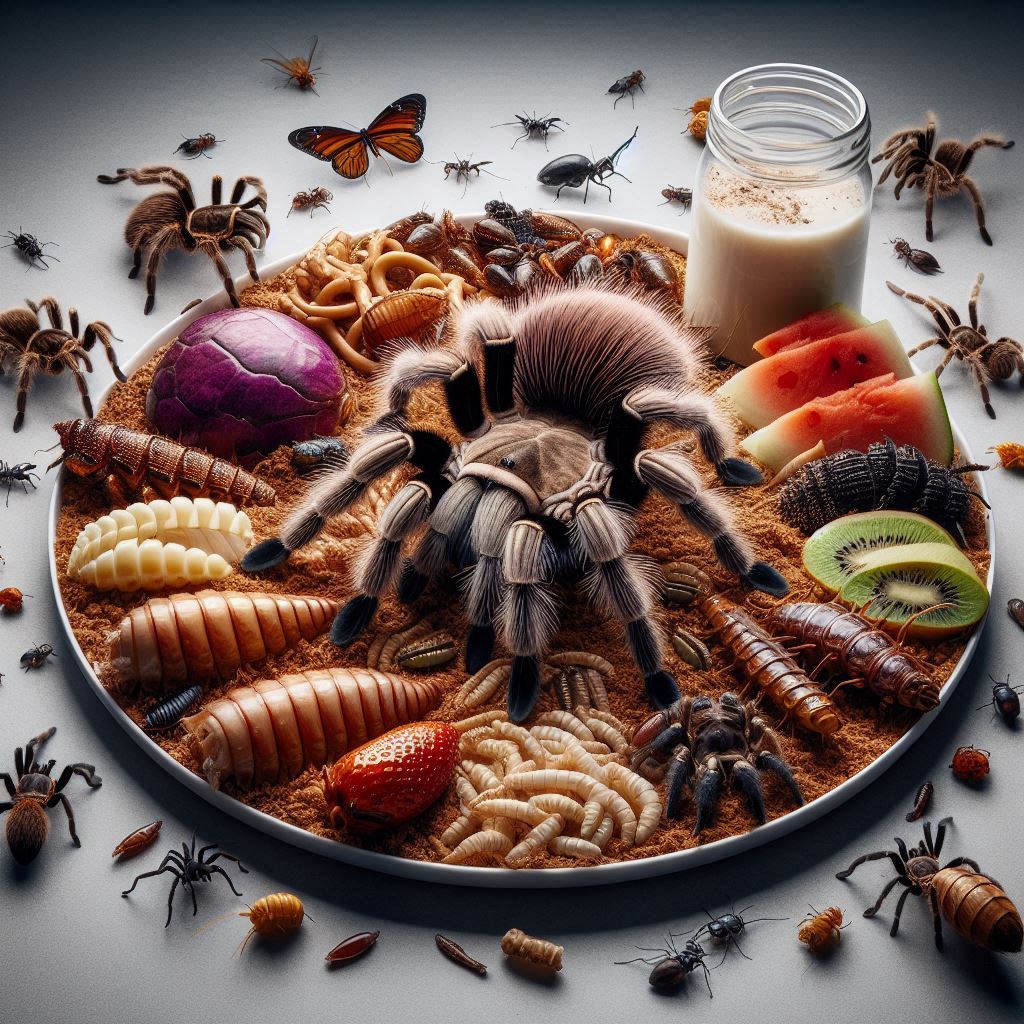Introduction
Table of Contents
When it comes to owning a pet tarantula, understanding their dietary needs is crucial for their health and well-being. The pink-toe tarantula, with its vibrant appearance and unique feeding habits, is a favorite among arachnid enthusiasts. But what exactly do pink-toe tarantulas eat? In this comprehensive guide, we’ll explore the diet of pink-toe tarantulas both in the wild and in captivity, offering practical tips and expert advice to ensure your pet thrives.

Overview of Pink-Toe Tarantulas
Appearance and Habitat
Pink-toe tarantulas, scientifically known as Avicularia avicularia, are notable for their striking pink-tipped feet and vibrant coloration. Native to the humid tropical rainforests of South America, these arboreal spiders spend most of their time in trees, spinning webs to catch prey and create nests.
Behavior and Lifespan
Known for their docile nature, pink-toe tarantulas are generally calm and easy to handle, making them popular pets. They typically live between 5 to 10 years in captivity, with females often outliving males.
What Do Pink-Toe Tarantulas Eat
In the wild, pink-toe tarantulas are opportunistic feeders, consuming a variety of insects and small invertebrates. Their diet primarily consists of:
- Crickets: A staple in their diet, providing essential proteins and nutrients.
- Locusts: Another common food source, offering a good balance of protein and fat.
- Small Beetles: These provide a crunchy texture and additional nutrients.
- Moths and Butterflies: Captured in their webs, these flying insects add variety to their diet.
- Other Small Invertebrates: Including caterpillars, ants, and grasshoppers.
Feeding Pink-Toe Tarantulas in Captivity
Feeding pink-toe tarantulas in captivity requires a bit more planning to mimic their natural diet and ensure they receive all necessary nutrients.
Recommended Foods
- Crickets: Easily available and nutritious, crickets should form the bulk of your tarantula’s diet.
- Roaches: Dubia roaches are particularly popular for their high protein content.
- Mealworms and Superworms: These can be offered occasionally but should not be the primary food source due to their high fat content.
- Waxworms: High in fat, these should be given sparingly as a treat.
- Fruit Flies: Suitable for younger tarantulas and spiderlings.
- Small Vertebrates: Occasionally, larger tarantulas may consume small lizards or pinky mice, but this is not essential.
Feeding Schedule and Amounts
- Adult Tarantulas: Feed 2-3 appropriately sized insects twice a week.
- Juvenile Tarantulas: Feed smaller, more frequent meals, 3-4 times a week.
- Spiderlings: Require tiny prey like fruit flies or pinhead crickets, fed every other day.
It’s important to remove any uneaten food after 24 hours to prevent mold and bacteria growth, which can harm your tarantula.
Common Feeding Problems and Solutions
Refusal to Eat
Sometimes, pink-toe tarantulas may refuse food due to stress, upcoming molting, or health issues. If your tarantula stops eating:
- Check the Environment: Ensure the habitat’s humidity and temperature are within the ideal range.
- Molting: Tarantulas often stop eating before a molt. Check for signs of an upcoming molt.
- Health Check: Look for signs of illness or injury. Consult a vet if necessary.
Prey Size
Ensure the prey is appropriately sized – no larger than the tarantula’s abdomen – to prevent injury.
Nutritional Requirements and Considerations
Pink-toe tarantulas require a balanced diet rich in protein, moderate in fat, and supplemented with vitamins and minerals. Gut-loading prey (feeding them nutritious food before offering them to your tarantula) is a common practice to enhance their nutritional value.
Supplementation: Occasionally, dusting prey with calcium or vitamin supplements can be beneficial, particularly for growing tarantulas.
Conclusion
Understanding what pink-toe tarantulas eat is key to maintaining their health and well-being. By providing a varied diet that mimics their natural food sources, you can ensure your tarantula thrives in captivity. Remember to monitor their feeding habits, maintain proper habitat conditions, and consult a vet if you notice any health concerns. With the right care and attention, your pink-toe tarantula will be a fascinating and healthy pet.
FAQs about What Do Pink-Toe Tarantulas Eat
1. What is the best food for pink-toe tarantulas? Crickets and Dubia roaches are ideal staple foods due to their high nutritional value and availability.
2. How often should I feed my pink-toe tarantula? Adult tarantulas should be fed 2-3 times a week, while juveniles require more frequent feeding, 3-4 times a week.
3. Can pink-toe tarantulas eat vertebrates? Occasionally, larger tarantulas might eat small vertebrates like pinky mice, but it’s not necessary for their diet.
4. Why is my pink-toe tarantula not eating? Possible reasons include stress, upcoming molting, or health issues. Ensure optimal habitat conditions and check for signs of molting.
5. Should I remove uneaten food? Yes, remove any uneaten prey after 24 hours to prevent mold and bacteria, which can harm your tarantula.
By following this detailed guide, you’ll be well-equipped to provide the best care for your pink-toe tarantula, ensuring they have a varied and nutritious diet that promotes their health and longevity.

